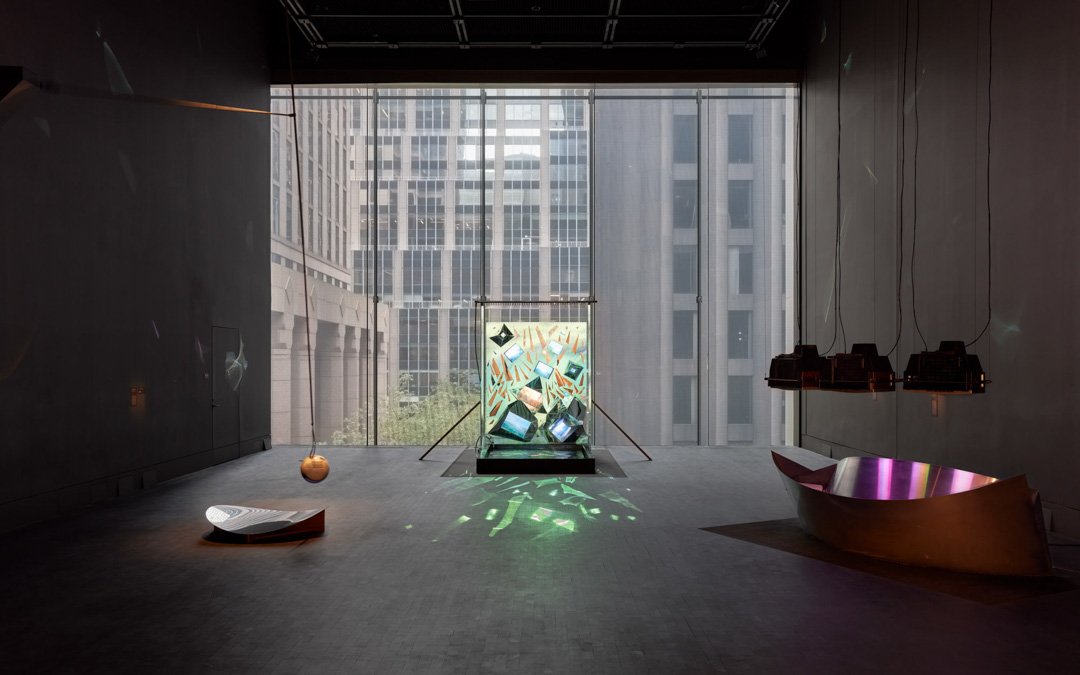Shigeko Kubota
Photograph Source
From MoMA
Born in 1937 in Niigata, Japan, Shigeko Kubota became a key member of the Japanese avant-garde, a respected participant in New York Fluxus events in the 1960s, and, starting in the 1970s, a pioneering practitioner of video art. Upon graduating from the Tokyo University of Education in 1960, she fell in with members of the avant-garde movements Group Ongaku, Hi Red Center, and Zero Jigen. These groups pushed art’s boundaries, incorporating music, performance, and movement into their work, with which they questioned the centralized authority of the postwar Japanese government and what they viewed as its focus on economic growth at the expense of the well being of individual citizens. Their experiments were also in keeping with the activities of Fluxus artists like George Maciunas and John Cage, whose works were highly regarded by the Tokyo avant-garde. Fluxus was an international, interdisciplinary movement that promoted experimentation across mediums, and a number of Japanese artists became important members, including Ay-O, Takako Saito, Yoko Ono, and Mieko Shiomi (who moved to New York with Kubota in 1964).
Because critics in Japan ignored most avant-garde art, and were particularly dismissive of women artists, Kubota decided that she would have better career opportunities in New York, where she was immediately accepted into the Fluxus community. Maciunas dubbed her the “vice president of Fluxus” for helping him to organize events and distribute mail art, and for her active participation in activities including the “Fluxus dinner commune”—a short-lived series of communal dinners prepared and attended by Fluxus artists, who would conclude the meals by making objects—and the production of multiples, small, multi-editioned works that were frequently produced collaboratively. Kubota also produced some of her own Fluxus objects, including Flux Napkins (c. 1967) and Flux Medicine (c. 1966).
Kubota’s most infamous (and somewhat anomalous) work was Vagina Painting (1965), which she presented as part of the Perpetual Fluxfest, at Cinematheque in New York on July 4, 1965. In this performance, she attached the handle of a paintbrush to her underwear, squatted over a bucket of red paint, and waddled across a large sheet of paper laid on the floor, creating red, menstrual-like smears. This piece functioned as a send-up of what the influential art critic Harold Rosenberg termed “action painting” by feminizing the hyper-masculine, phallus-as-paintbrush image of Abstract Expressionist painters like Jackson Pollock. It also may have been a reference to the practice of lower-class geishas, who sometimes entertained customers by writing calligraphy with brushes inserted in their vaginas.1 Kubota’s performance fused dichotomies, combining high and low arts, masculine and feminine elements, and Eastern and Western cultures.
Following Vagina Painting, Kubota turned away from performance and began exploring new media, particularly video, which would comprise the bulk of her output for the rest of her career. Duchampiana: Nude Descending a Staircase (1976)—which features three video monitors embedded in a plywood staircase showing a nude woman walking down stairs—reveals her indebtedness to Marcel Duchamp. This was the first video sculpture acquired by MoMA. Kubota and her husband, Nam June Paik, pioneered the development of video art, exploring the aesthetic, technological, emotive, and even organic potential of this new medium.
Installation view of “Shigeko Kubota: Liquid Reality”, 21 August 2021–13 February 2022, at the Museum of Modern Art, New York. Photo © 2021 Museum of Modern Art, New York; by Denis Doorly.


